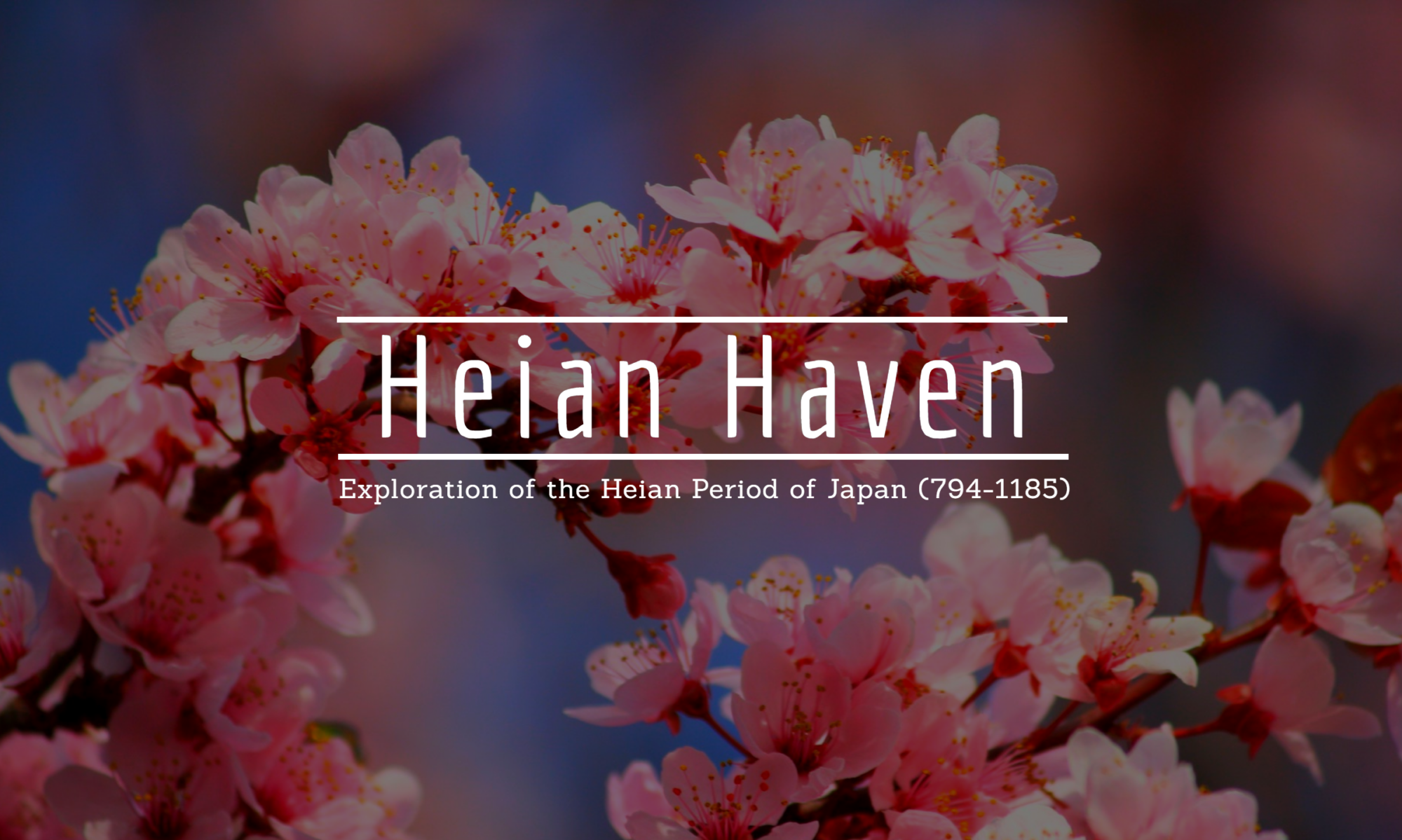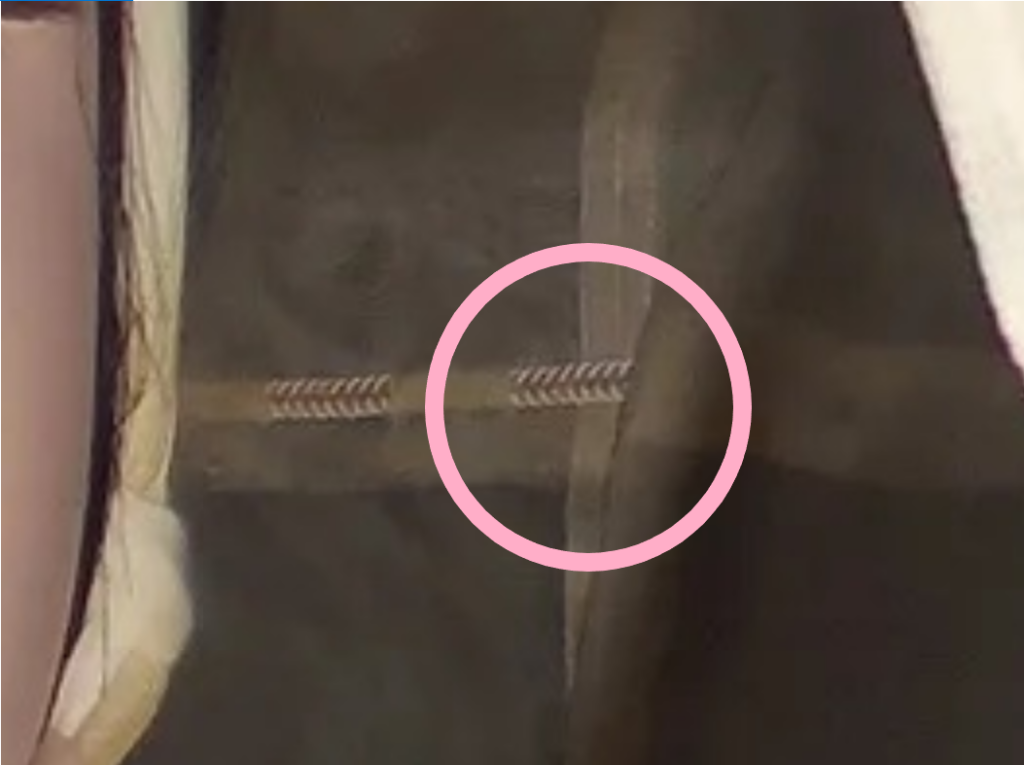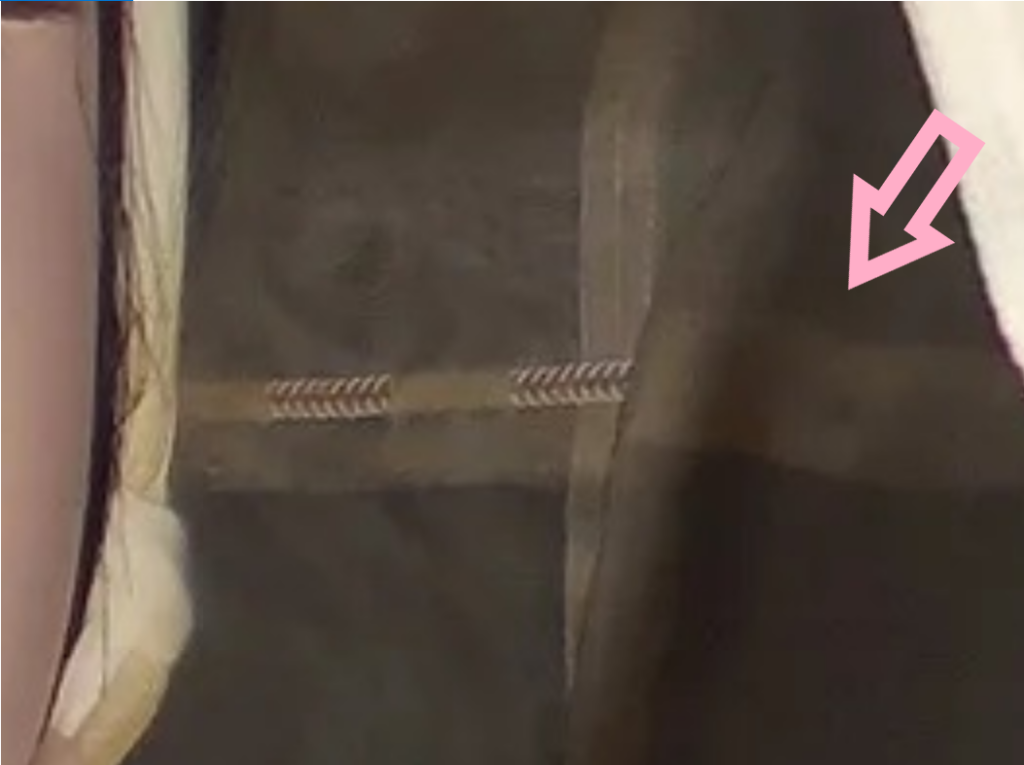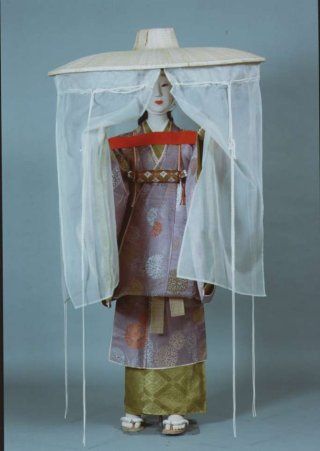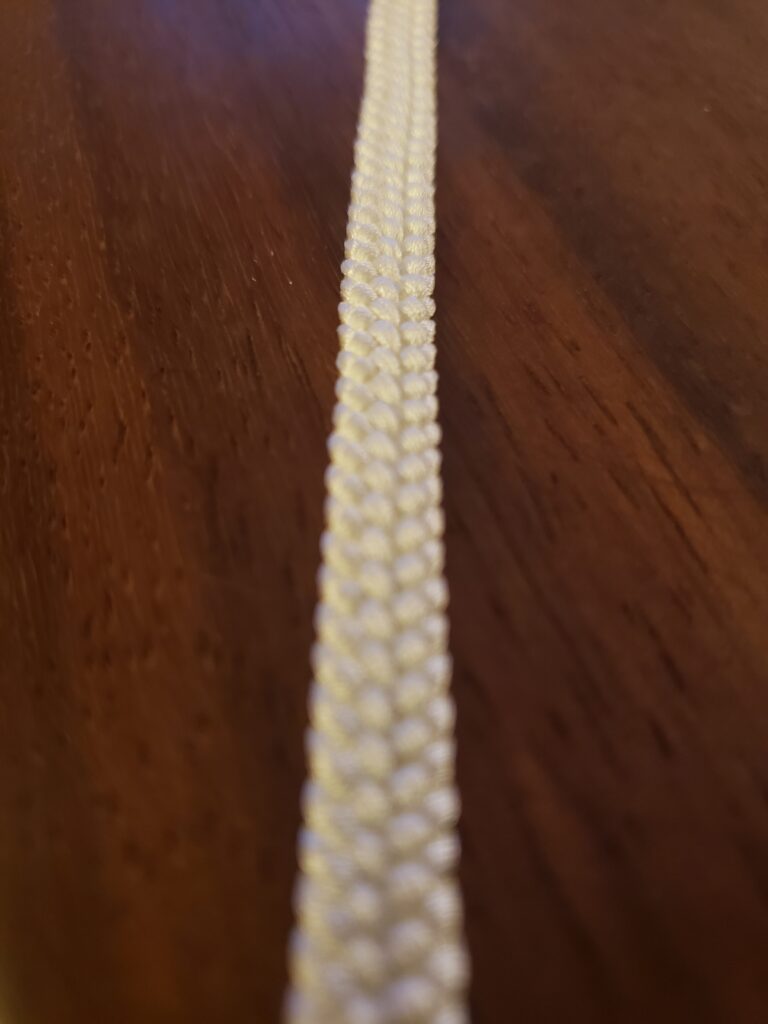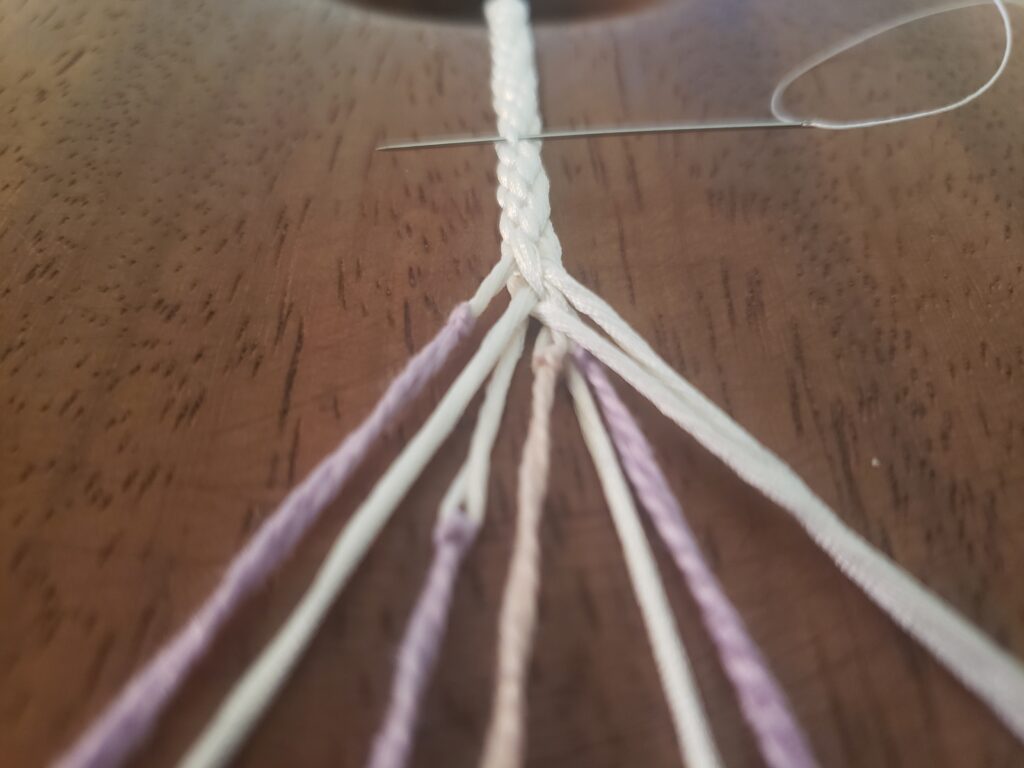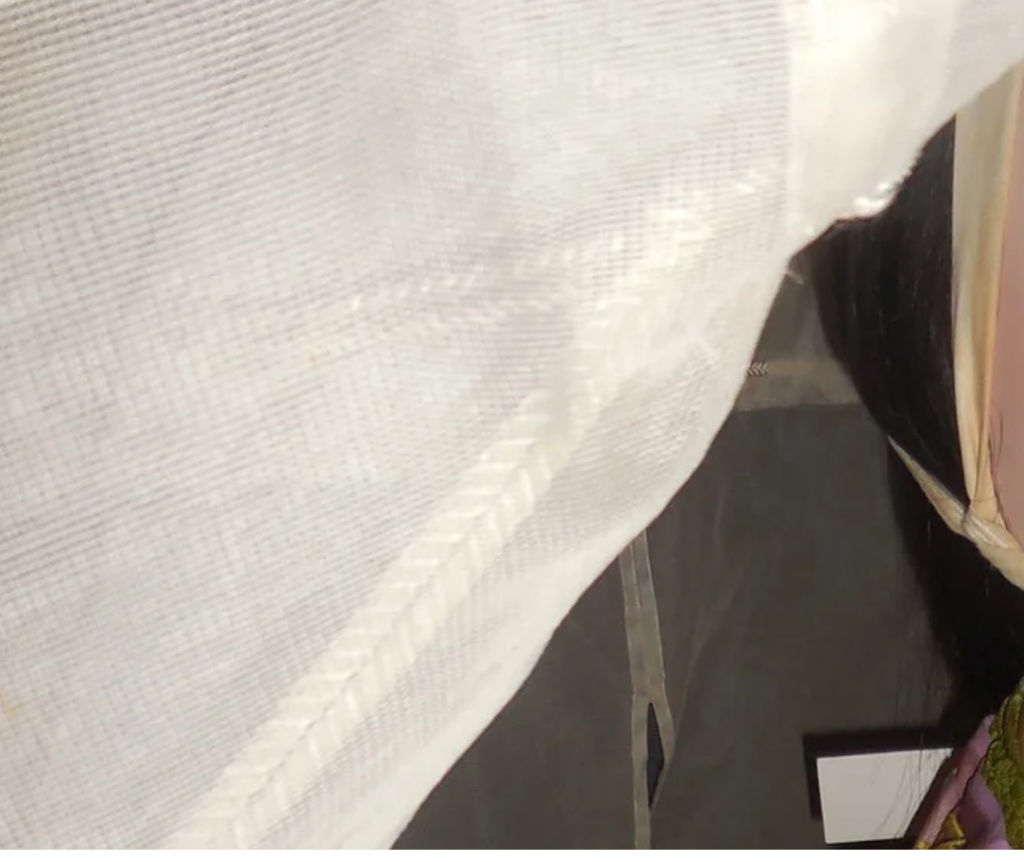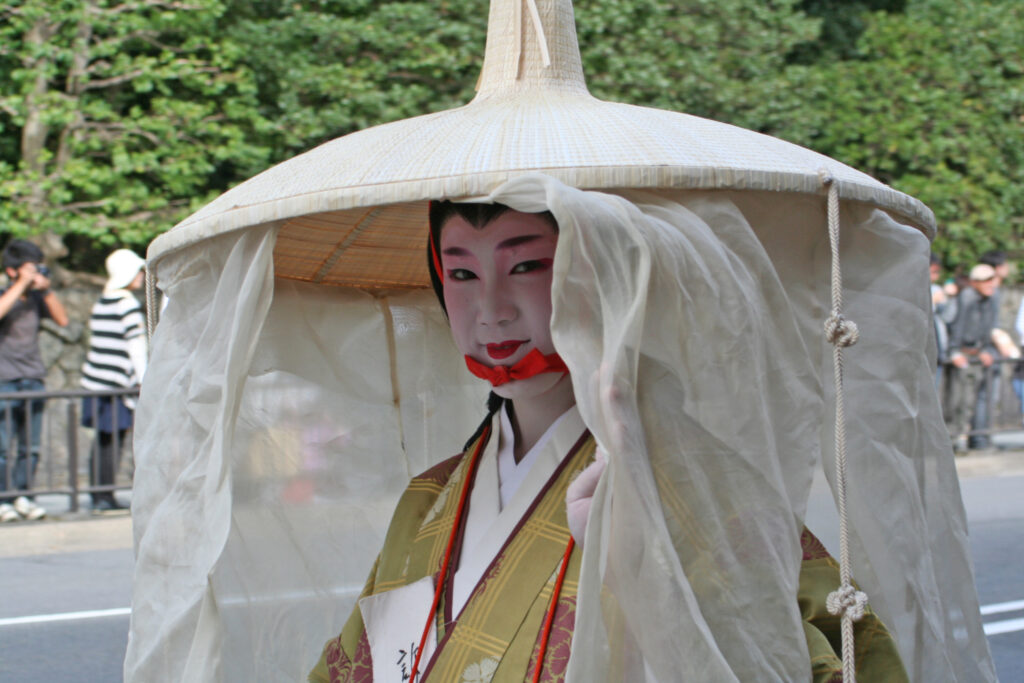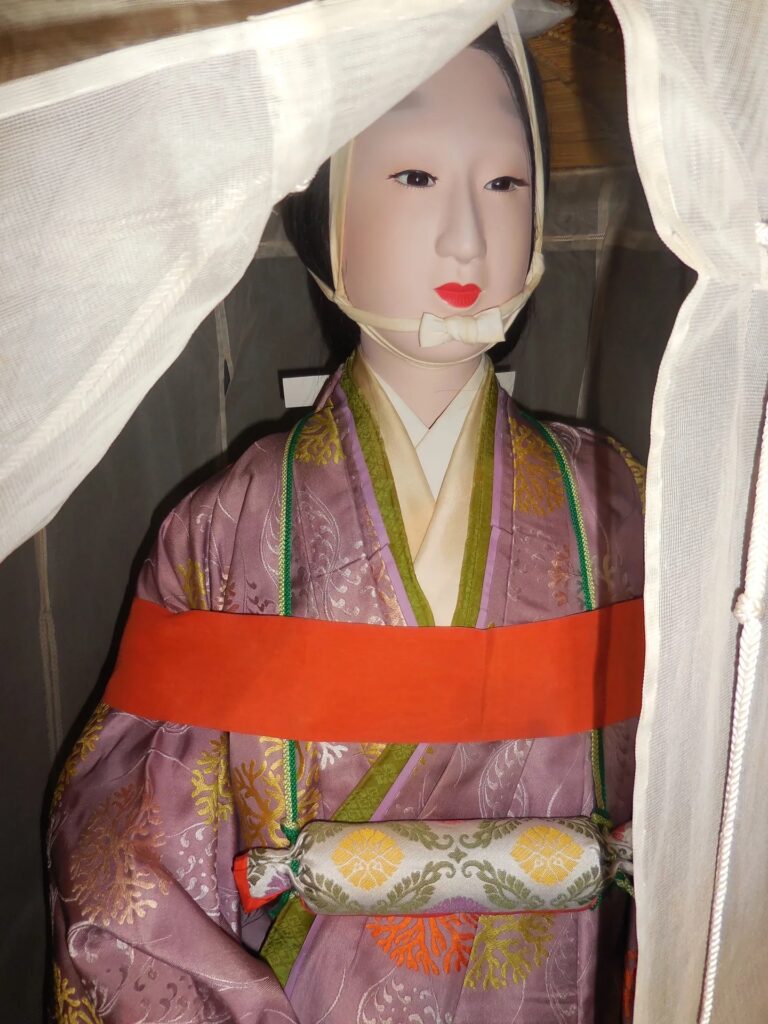Complete save one sleeve I step back and admire it Could I be more pleased?
The flaws quickly forgotten As its beauty melts my stress.
I finished it! The uwagi is complete!
I’d love to take some time to celebrate, but that has to wait until everything is turned in.
I’ve returned to the hat for it’s final assembly. First I removed the old veil panel. I’m currently trimming the kazari-himo or decorative cords to the same length.
Once I’ve finished that (I’ve got one left) I have to contemplate how I’m actually slitting the veil panels to weave the cords through. I think I’m going to go with exactly what I can see in that zoomed in photo, a central outlet so the cords hang down the center of the veil panel and a slit to allow both cords to pass to the back of the veil at the seams of the panels. The majority of the time the cords are encased within the channel created by the stitched down overlap.
After cords are adjusted, I’ll stitch the entire completed veil and cord assembly to the hat. Crud, A curved needle would make that a whole lot easier. I don’t think I have one…yeah, I looked, no dice. I may heat up a needle and take some tools to it and shape my own curved needle. I’ve done it once before. That 15 minutes or less spent making that needle bent will save me twice that time. Yup. I guess that’s a thing I’ll do after finishing that cord.
Once the mushi no tareginu or veil panels are attached it’s all over but the pictures. I’m getting dressed and taking pictures as early as I can to give more time for finalizing submission materials. Crown’s A&S is only accepting 3 images, so I’ve planned out the 3 shots I want. My partner is going to play photog. We have plans for shooting both outside and inside and choosing the best. I’ll grab some extra stuff and some video as well.
After going over the documentation one more time, I’ll upload everything and send it off.
Here’s a cool bit, they’re giving us a couple extra days for the optional video! This means I can shoot my video on Monday and then have two days to edit it. I’m super stoked about the extra time, my video will be so much better than if I had rushed it tomorrow with the other materials.
